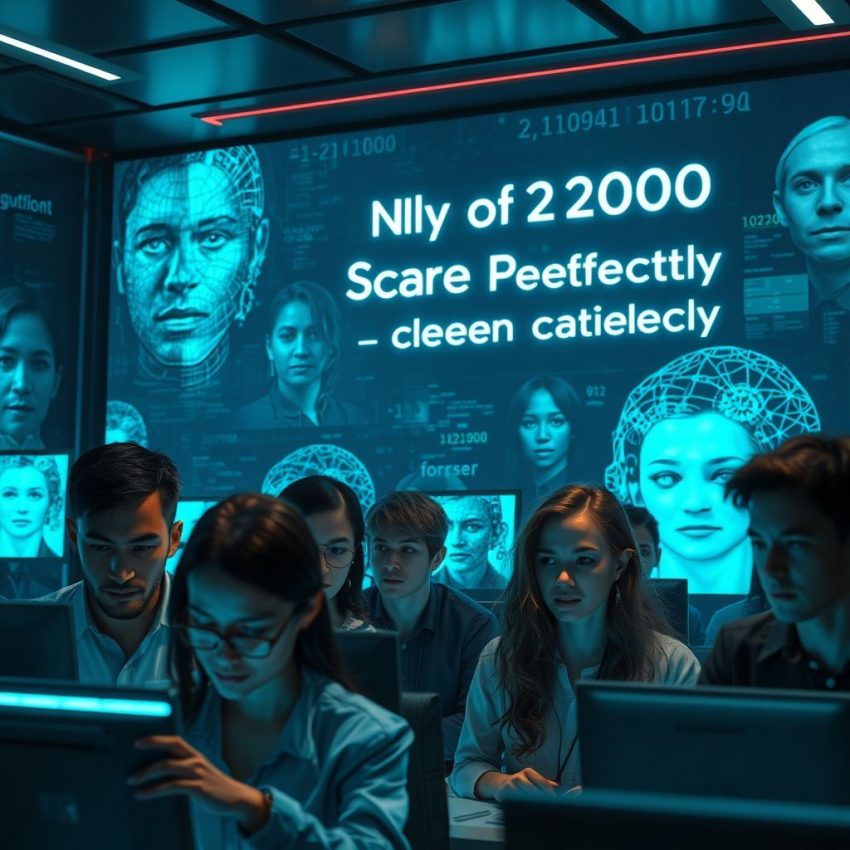We're Failing the Deepfake Detection Test: Only 2 Out of 2000 Got a Perfect Score
Deepfakes are getting scarily good. So good, in fact, that a recent test revealed just how unprepared we are to spot them. A staggering 2000 participants were shown deepfake content, and a mere two individuals managed a perfect score in identifying the manipulated media. Two. Out of two thousand. Let that sink in for a moment.
This alarming statistic highlights a growing problem in our digitally saturated world. Deepfake technology, using artificial intelligence to create incredibly realistic but entirely fabricated videos and audio, is evolving at a rapid pace, leaving our ability to discern fact from fiction lagging far behind.
The test, [mention source/study if available, otherwise remove this sentence], presented participants with a range of content, including deepfake videos and genuine footage. The goal was to correctly identify which pieces of media had been manipulated. While some participants managed to identify some of the deepfakes, the overwhelming majority struggled, with only 0.1% achieving a perfect score.
This isn't just a fun fact to share at parties. The implications of our collective inability to spot deepfakes are profound and far-reaching:
- Erosion of Trust: Deepfakes can be weaponized to spread misinformation, damage reputations, and manipulate public opinion. Imagine a convincingly fabricated video of a politician saying something inflammatory – the damage could be irreparable, even after debunking.
- Political Manipulation: Elections could be swayed, social unrest could be ignited, and international relations could be strained based on fabricated evidence.
- Personal Security Risks: Deepfakes can be used for blackmail, harassment, and identity theft, creating very real threats to individual safety and security.
- The Blurring of Reality: As deepfakes become more sophisticated, our very understanding of truth and reality is being challenged. What can we believe when seeing is no longer believing?
So, what can we do? We can't bury our heads in the sand and hope the problem goes away. We need a multi-pronged approach:
- Improved Detection Technology: Researchers are working tirelessly on developing more sophisticated deepfake detection software. We need to support and invest in these efforts.
- Media Literacy Education: We need to equip ourselves and future generations with the critical thinking skills necessary to analyze media critically and identify potential manipulation. This includes understanding how deepfakes are created and the telltale signs to look for.
- Platform Accountability: Social media platforms and online news outlets have a responsibility to implement measures to identify and flag deepfake content, limiting its spread and potential impact.
- Legislation and Regulation: Governments need to consider legislation and regulations to address the malicious use of deepfake technology, balancing freedom of speech with the need to protect individuals and society from harm.
The results of this test are a wake-up call. We are in a race against time to develop the tools and skills necessary to navigate a world increasingly saturated with synthetic media. Ignoring the threat of deepfakes is not an option. We must act now before the lines between reality and fabrication become irrevocably blurred.
Don’t miss out on this exclusive deal, specially curated for our readers! Kickstart Your Fitness Journey with the Peloton Treadmill
This page includes affiliate links. If you make a qualifying purchase through these links, I may earn a commission at no extra cost to you. For more details, please refer to the disclaimer page. disclaimer page.

